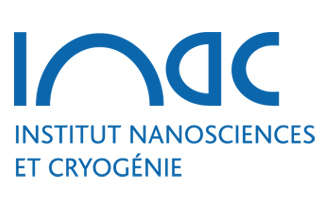Photoluminescence of silicon nanowires obtained by epitaxial chemical vapor deposition
Résumé
We have carried out photoluminescence measurements of silicon nanowires (SiNWs) obtained by the chemical vapor deposition method with a copper-catalyzed vapor–liquid–solid mechanism. The nanowires have a typical diameter of 200 nm. Spectrum of the as-grown SiNWs exhibits radiative states below the energy bandgap and a small contribution near the silicon gap energy at 1.08 eV. A thermal oxidation allows to decrease the intensity at low energy and to enhance the intensity of the 1.08 eV contribution. The behavior of this contribution as a function of the pump power is correlated to a free carrier recombination. Furthermore, the spatial confinement of the carriers in SiNWs could explain the difference of shape and recombination energy of this contribution compared to the recombination of free exciton in the bulk silicon. The electronic system seems to be in an electron–hole plasma (ehp), as it has already been shown in SOI structures [M. Tajima, et al., J. Appl. Phys. 84 (1998) 2224]. A simulation of the radiative emission of an ehp is performed and results are discussed.
| Origine | Fichiers produits par l'(les) auteur(s) |
|---|

